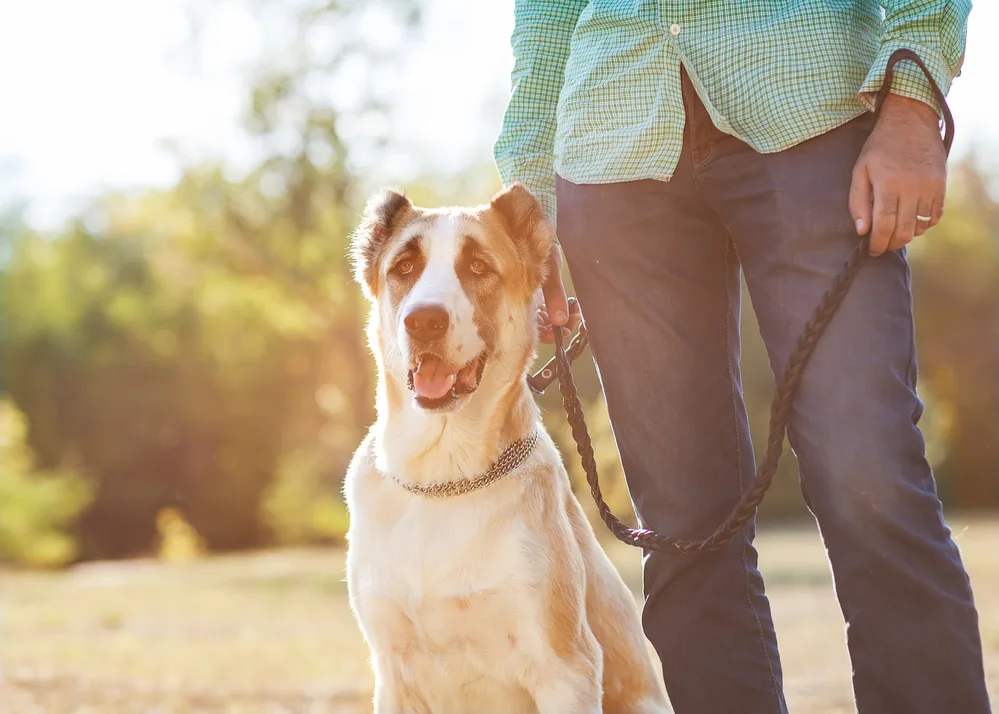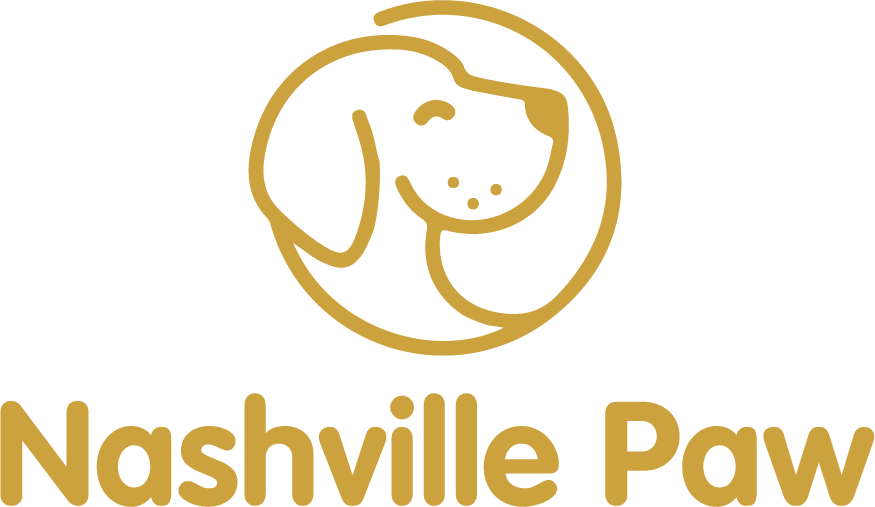Dogs need regular walking to explore the world, expel energy, and get a good amount of exercise.
But, walking your dog can be a nightmare when they pull against their leashes!
Why does my dog pull on her leash?
Dogs pull on their leashes for many different reasons. Pulling can be an instinct for some breeds. For others, it’s a learned behavior. Most dogs pull on their leashes to quickly get where they want to go.
Owners need to know how to control their dogs to walk them safely—keeping them calm starts with understanding their motives.
Stop struggling to keep up with your furry friend. Instead, learn why they’re pulling on their leashes so you can fix the problem.
6 Reasons Why Your Dog Pulls On Her Leash

Many dogs fight for control while on walks. Correcting this behavior early is key to having a well-behaved pet.
But, what happens when your dog keeps pulling into adulthood? It could be something as simple as an unmet need.
If there’s an underlying behavioral problem, you have a bit of work ahead of you. Still, don’t lose all hope! If you can figure out why your dog is pulling, you can work on building better manners.
Reason 1: They Need To Use the Bathroom
Dogs go outside to use the bathroom. You don’t want them making a mess on your clean carpet!
If your dog makes a mad dash to the grass every time, it may be having a bathroom emergency. This urgency will make them pull so they can find sweet relief.
You’ll know this is your problem if your dog walks and poops simultaneously. You’d pull, too, if you waited hours to go potty!
Reason 2: They Want To Smell Something
Sense of smell is essential to most animals, especially canines. This is because dogs use smell to understand the world around them.
The scent is like social media to your pooch. Sniffing the area allows them to learn about other animals in their neighborhood.
Curiosity may have killed the cat, but dogs are different. If your dog yanks you around on walks, they probably have something they want to smell.
Reason 3: They See Another Animal
Nobody has ever complained about a friendly animal. However, social dogs can be more eager to meet other pets passing by.
Your dog might pull on her leash to make a new friend. This can be unsafe since some dogs have reactive anxiety.
Your dog could get seriously hurt if she approaches an unfriendly animal. You need to correct this behavior ASAP for everyone’s safety.
Reason 4: They Walk Faster Than You
It’s no secret that dogs are fast walkers. Large dogs with long legs can cover twice as much ground as the average human.
If your dog pulls you around like a toy, you might just be too slow for them! People with athletic breeds like Border Collies are more likely to experience this problem than small dog owners.
Your fast-walking pup might have too much energy. If that’s the case, put them in an agility activity to help slow them down. Otherwise, you need to pick up the pace!
Reason 5: They Feel Restrained
Many dogs don’t like feeling restrained. Locking up on a loose leash and tightening their collars activates a reflex that makes them pull away.
This behavior is very visible in sled dog breeds like Huskies. These pups usually have a “pulling” instinct like rolling in the grass.
You might think that pulling your dog back will stop the pulling. You’re making the problem worse by activating their oppositional reflex.
Reason 6: They’ve Developed a Learned Behavior
Dogs are a lot like toddlers. They will continue acting a certain way if they get away with things for too long.
Puppies don’t naturally know how to walk on a leash. They learn to pull when owners don’t correct them early on.
Changing canine behavior is tricky since they can’t understand our words. You have to use the right actions to communicate your wants.
Don’t allow your pet to control the walk. If you do, you’re teaching them that pulling is the way to get what they want.
How to Stop Your Dog From Pulling On Her Leash

You might have given up on solving your dog’s pulling issue. But, knowing some possible causes is half of the solution!
Some owners have to make a few lifestyle changes. Others may need to dive deeper into their dog’s behavior.
No matter the reason, we have a solution for you. Keep reading to learn how to stop your dog from pulling on her leash.
Solution 1: Walk Your Dog More Often
The first solution is the easiest; if you want your dog to stop yanking you around, walk them more often.
Your pup needs time to sniff, do business, and explore its surroundings. Taking them on frequent walks may help them behave less frantically.
Some dogs need more exercise than others. As we said earlier, dogs are a lot like kids; frequent walks tire them out and slow them down.
Walking more often will also give them more chances to relieve themselves. This way, every walk isn’t a race to the bathroom.
Solution 2: Try Positive Reinforcement
If more walks don’t solve the problem, you’ll need to flex your teaching skills. Positive reinforcement dog training involves rewarding good behavior and ignoring unwanted actions.
You might be tempted to punish your pooch for misbehaving. However, dogs don’t learn the same way people do; you need patience to reinforce proper walking manners.
Reward your dog with treats and praise when they walk a distance without pulling. When they yank you around, don’t respond; instead of acknowledging the behavior, stay neutral until they loosen the reigns.
Grab a friend and give this exercise a try:
Have someone stand a few feet down the sidewalk. Walk your dog towards your friend. Reward calm behavior with treats. If your dog pulls, walk them back to the starting point and begin again.
Repeat this process until you get to the finish line without yanking. When you get to the end, shower your puppy with tons of love and pets!
Using negative reinforcements and punishment can be disastrous to your dog’s development. Don’t yell at or hit your pup when they make a mistake; you risk encouraging anxious and aggressive behavior this way.
Solution 3: Use Anti-Pull Leashes and Harnesses
Leash pulling is a common problem, and pet brands have noticed it. Many companies make anti-pull leashes and harness to help struggling owners.
If your dog snorts like a pig on her walk, it might be because of her collar. Instead, use an anti-pulling harness to ease the strain.
Restrictive collars can cause a collapsing trachea. Your dog will cough, gag, and experience pain when you yank them back on its leash.
Harnesses work by adding pressure on less-sensitive areas, like the shoulders. No-pull harnesses clip in the front, forcing your pup to turn around and face you when they pull.
Harnesses can be hard to put on. If you need visual assistance, check out this video to learn how to fit and use a no-pull harness.
In my experience, no-pull harnesses work the best. My stubborn dog immediately responded to the redirection. Eventually, she got so annoyed with being turned around that she stopped pulling.
You could even try using a gentle lead to stop the pulling habit. These leashes feature a nose strap that puts gentle pressure on the snout to discourage pulling.
Solution 4: Walk in a Group
Your dog could pull on her leash because of overexcitement. If she needs more stimulation and socialization, try joining a dog-walking group!
This solution may involve a bit of a learning curve. If your dog is already friendly, it should get the hang of group walks in no time.
Walking with other dogs will distract you from their pulling instincts. It will also tire them out, leaving her with less energy to yank and tug on her leash.
Solution 5: Get Professional Training
There’s no shame in asking for help. Sometimes, you need an experienced trainer to work their magic.
This option is for dogs that put themselves and their owners in danger with their pulling habits. Even if your pup has a severe problem, they’re never too old to learn something new.
Professional trainers have patience and know how to speak your pooch’s language. After observing you with your pet, they’ll be able to spot the problem immediately.
Training comes in different forms depending on your needs. Some owners prefer group training sessions to socialize their pets while teaching good manners.
Dogs are intelligent animals. You might only need a few sessions to nip this problem.
You could also try a train and board program for more challenging cases. This type of training means leaving your pet with its teacher for some time.
When they’re ready, your trainer will return your dog well as new! They’ll also teach you how to handle your pet, so they don’t revert to their old ways.
FAQs
Do dogs grow out of leash pulling?
Dogs don’t magically grow out of their destructive behaviors. Owners have to take the time to teach them good manners. You’ll always have a pulling problem if you don’t train your dog to walk well on a leash.
Are prong and shock collars safe to use?
We don’t recommend prong and shock collars to the average owner. These tools can be dangerous in the wrong hands. Only professionals should use these collars in extreme situations.
When should I start leash training my dog?
You should start leash training your puppy right away! The more practice she gets, the better she will be on walks. As long as your puppy is fully vaccinated, you are safe to start the learning process.
Bottom Line
Stressful walks are a thing of the past now that you know why your dog keeps pulling on her leash. Luckily, this is a common, fixable problem with several simple solutions.
There’s still hope, whether you’re activating your dog’s pulling reflex or they’re expressing a learned behavior. Getting to the bottom of the problem takes some keen observation.
Small changes, like walking in groups or switching to a no-pull harness, can completely transform your dog. Even pups needing training can learn to take a calm stroll through the park.
So, put on your walking shoes, get your leashes, and start walking!
